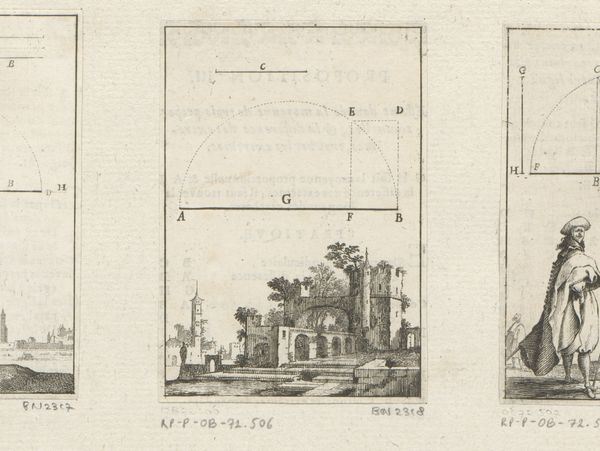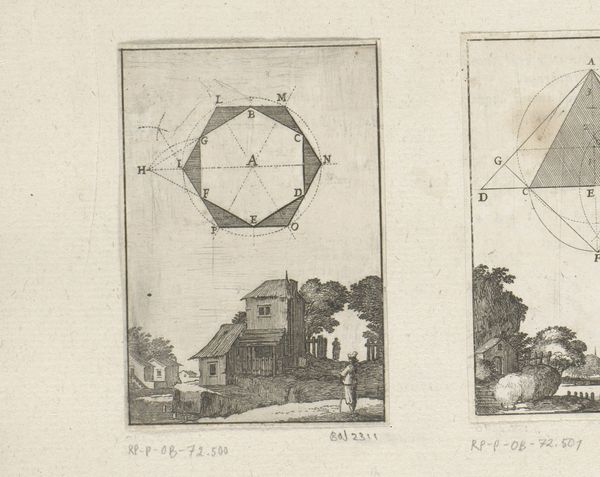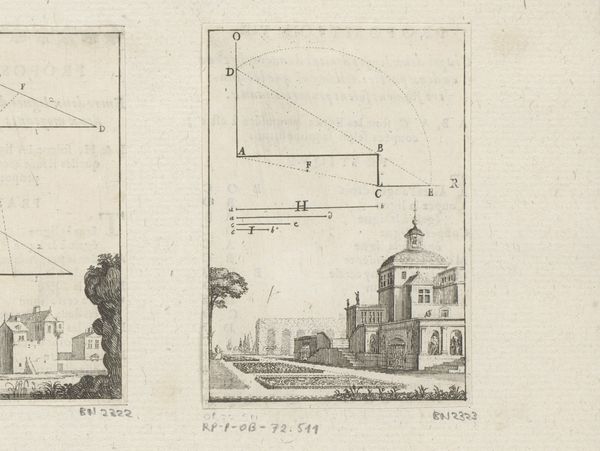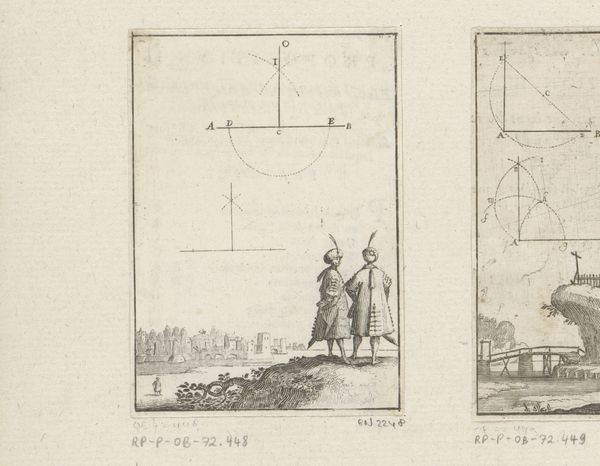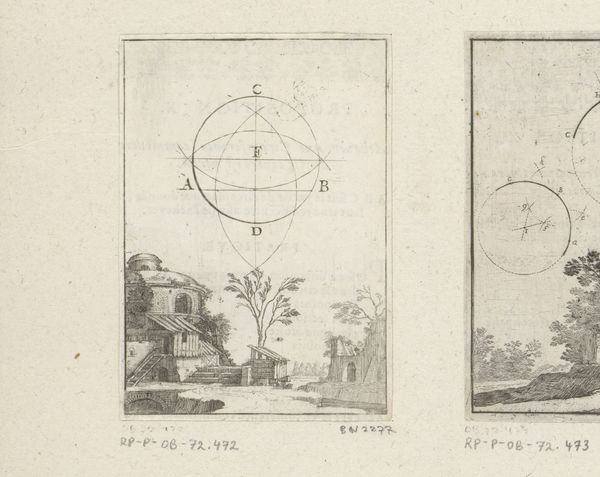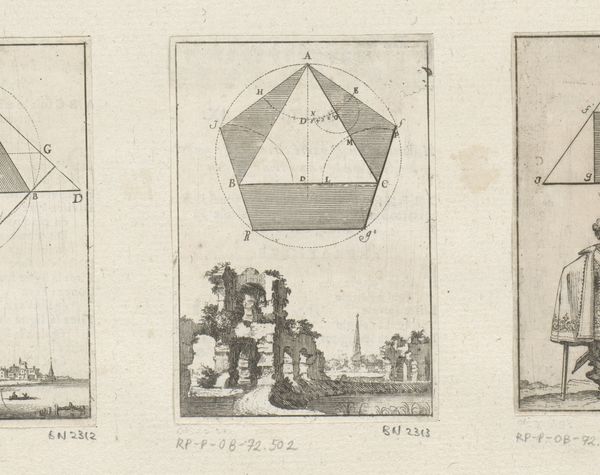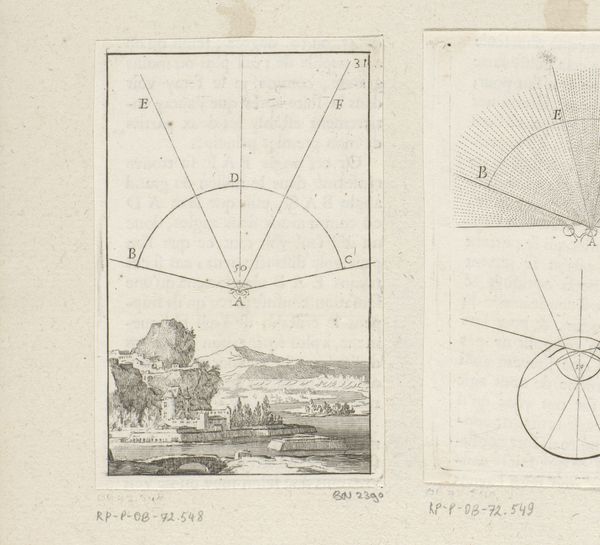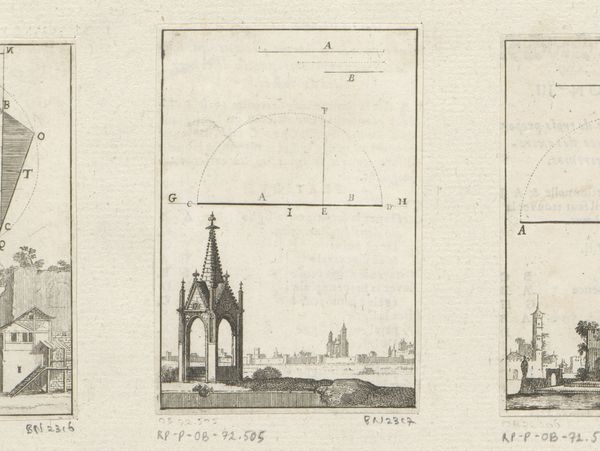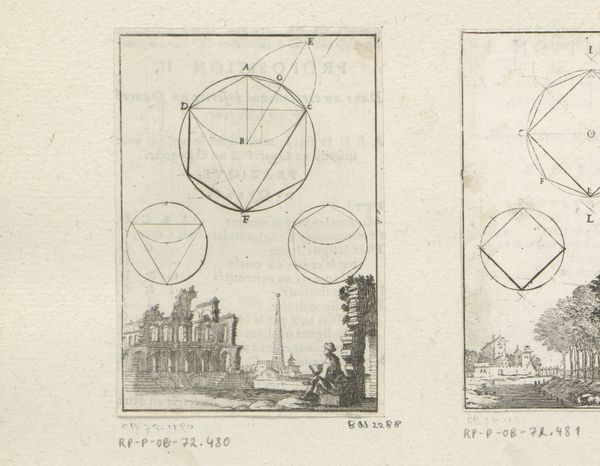
Twee hoeken begrensd met een passer met onderaan een huis aan het water 1669
0:00
0:00
sebastienleclerci
Rijksmuseum
drawing, print, etching, engraving, architecture
#
architectural sketch
#
drawing
#
baroque
# print
#
etching
#
landscape
#
geometric
#
line
#
engraving
#
architecture
Dimensions: height 93 mm, width 66 mm
Copyright: Rijks Museum: Open Domain
Curator: What an intriguing image. This print from 1669 is by Sébastien Leclerc I, titled "Twee hoeken begrensd met een passer met onderaan een huis aan het water." It's currently held at the Rijksmuseum. Editor: Immediately, the geometry juxtaposed with the landscape catches my eye. It feels like the rational, man-made world trying to impose order on nature. But also there's a balance. The architectural renderings coexist with the idyllic scenes, each given their own separate space. Curator: Precisely. The compass-drawn angles above, labeled with letters, appear almost like astrological charts presiding over these grounded, terrestrial scenes below. Leclerc was clearly playing with the relationship between the ideal and the real, the conceptual and the observed. It seems he wanted to highlight the intellectual underpinnings of architectural design. Editor: Definitely, it seems very academic, but the medium itself—etching, engraving—adds an interesting dimension. These techniques involve labor, skill, and tools shaping metal to reproduce images. It reminds us that even abstract ideas take physical form through concrete actions, like the artisan applying their tool, translating designs into mass-produced form. It isn't just a flight of imagination! Curator: The landscape, with its soft lines depicting the house near the water, might represent the 'natural' state before geometric planning reshapes it, suggesting that design comes with the human ambition to alter the existing landscape. There's a subtle commentary on the influence of man. Notice that a 'tool' has designed 'nature'. It’s very reminiscent of Arcadian longings but done through geometrical representation. Editor: Absolutely, and the duplication enabled by printing democratizes access to architectural knowledge, theoretically enabling wider participation in reshaping the built environment. This image wasn’t meant just for aristocrats, but for anyone who was interested in building. Curator: Thinking about the overall mood, it feels so contained and thoughtful. A blend of order and nature reflected in an intricate image—very emblematic of its time. Editor: It leaves me thinking about how our understanding of space has been so deeply mediated by instruments and techniques of production, as it reflects the way buildings can change culture.
Comments
No comments
Be the first to comment and join the conversation on the ultimate creative platform.

